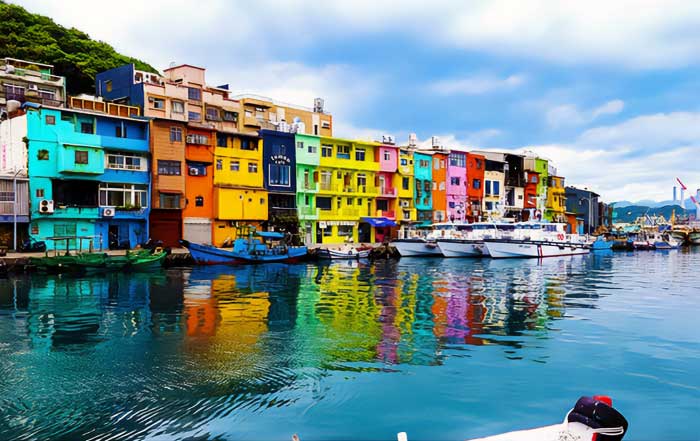The Korean fashion and beauty industry has been a significant player on the global stage, with its influence spreading far beyond the borders of South Korea. As of 2024, the industry is witnessing unprecedented growth, driven by innovation, quality, and the global popularity of Korean pop culture. The market statistics reveal a thriving sector that continues to expand, offering insights into revenue, size, and growth percentages.
Market Statistics and Growth
The Korean fashion and beauty industry has seen remarkable growth over the past few years. In 2023, the market size was estimated at $13.1 billion, with projections indicating it could reach $15.8 billion by the end of 2024. This growth is driven by both domestic and international demand, with an annual growth rate of approximately 7.8%. The beauty sector alone accounts for a significant portion of this market, with skincare products leading the charge.
The revenue generated from the beauty industry is substantial, contributing nearly $10 billion in 2023. This figure is expected to rise as more consumers worldwide embrace Korean beauty products. The fashion industry, on the other hand, has also shown significant growth, driven by the increasing popularity of Korean fashion brands and the influence of K-pop and K-drama stars.
Famous Beauty Brands in Korea
Korea is home to numerous beauty brands that have gained international acclaim. Among these, some of the most famous include:
- Amorepacific: One of the largest beauty companies in Korea, Amorepacific owns several well-known brands such as Laneige, Sulwhasoo, and Innisfree. These brands are renowned for their innovative products and high-quality ingredients.
- LG Household & Health Care: Another major player in the Korean beauty market, LG Household & Health Care owns brands like The History of Whoo, O Hui, and Belif. These brands are popular for their luxurious and effective skincare solutions.
- Etude House: Known for its playful and youthful image, Etude House offers a wide range of affordable and trendy beauty products that appeal to a younger audience.
- Missha: This brand is famous for its high-quality yet affordable products, making it a favorite among budget-conscious beauty enthusiasts.
Top Skincare Brand in Korea
When it comes to skincare, one brand stands out as the top choice among consumers: Laneige. Part of the Amorepacific family, Laneige has built a reputation for its innovative hydration-focused products. The brand's best-selling Water Sleeping Mask and Lip Sleeping Mask have garnered a loyal following worldwide, thanks to their effective formulas and luxurious feel.
Laneige's commitment to research and development has allowed it to stay ahead in the competitive skincare market. The brand continually introduces new products that cater to various skin concerns, from dryness and dullness to anti-aging. Laneige's popularity is a testament to its ability to combine traditional Korean beauty wisdom with cutting-edge technology.
Medical Tourism in South Korea
South Korea has also emerged as a leading destination for medical tourism, attracting visitors from around the world seeking high-quality medical treatments and cosmetic procedures. In 2023, approximately 600,000 medical tourists visited South Korea, a number that is expected to rise to 700,000 by the end of 2024. The country's advanced healthcare system, skilled medical professionals, and state-of-the-art facilities make it an attractive option for those seeking medical care abroad.
Korean Fashion & Beauty Industry Market Statistics
Countries Leading Medical Tourism Visits to South Korea
Several countries contribute significantly to the influx of medical tourists to South Korea. The main countries from which people come for medical tourism include:
- China: Chinese tourists make up a large portion of medical visitors to South Korea. The proximity, coupled with the high reputation of Korean medical services, attracts many Chinese patients seeking treatments ranging from cosmetic surgery to cancer care.
- United States: American medical tourists are also significant, drawn by the relatively lower costs and high standards of care in South Korea. Many Americans visit for cosmetic procedures, dental care, and specialized treatments.
- Japan: Japanese tourists frequently visit South Korea for medical treatments, particularly cosmetic surgery and skincare procedures. The cultural affinity and geographical proximity play crucial roles in this trend.
- Russia: South Korea is a preferred destination for Russian medical tourists, especially for complex medical procedures and surgeries. The advanced medical technology and expertise available in Korea attract many Russian patients.
- Middle Eastern Countries: Patients from countries like the United Arab Emirates and Saudi Arabia travel to South Korea for its advanced medical treatments and specialized care, including cancer treatments and organ transplants.
The Future of Korean Fashion and Beauty Industry
The future looks bright for the Korean fashion and beauty industry. With continuous innovation, strategic marketing, and the global influence of Korean culture, the industry is set to maintain its upward trajectory. The focus on sustainability and eco-friendly products is also gaining momentum, appealing to the environmentally conscious consumer.
The rise of e-commerce and social media has further propelled the industry's growth, making Korean beauty and fashion products more accessible to a global audience. As consumers increasingly seek out quality, innovation, and value, Korean brands are well-positioned to meet these demands.
In conclusion, the Korean fashion and beauty industry is a dynamic and rapidly growing sector with significant contributions to the global market. From innovative skincare brands like Laneige to the booming medical tourism industry, South Korea continues to set trends and attract visitors worldwide. With its commitment to quality, innovation, and sustainability, the future of the Korean fashion and beauty industry looks promising.

